To some extent the summer doldrums have set in, less activity, but always something a little different on each visit.
Mushrooms are more plentiful in the fall, but a damp period will bring some out. The last one is called "fairy fingers".

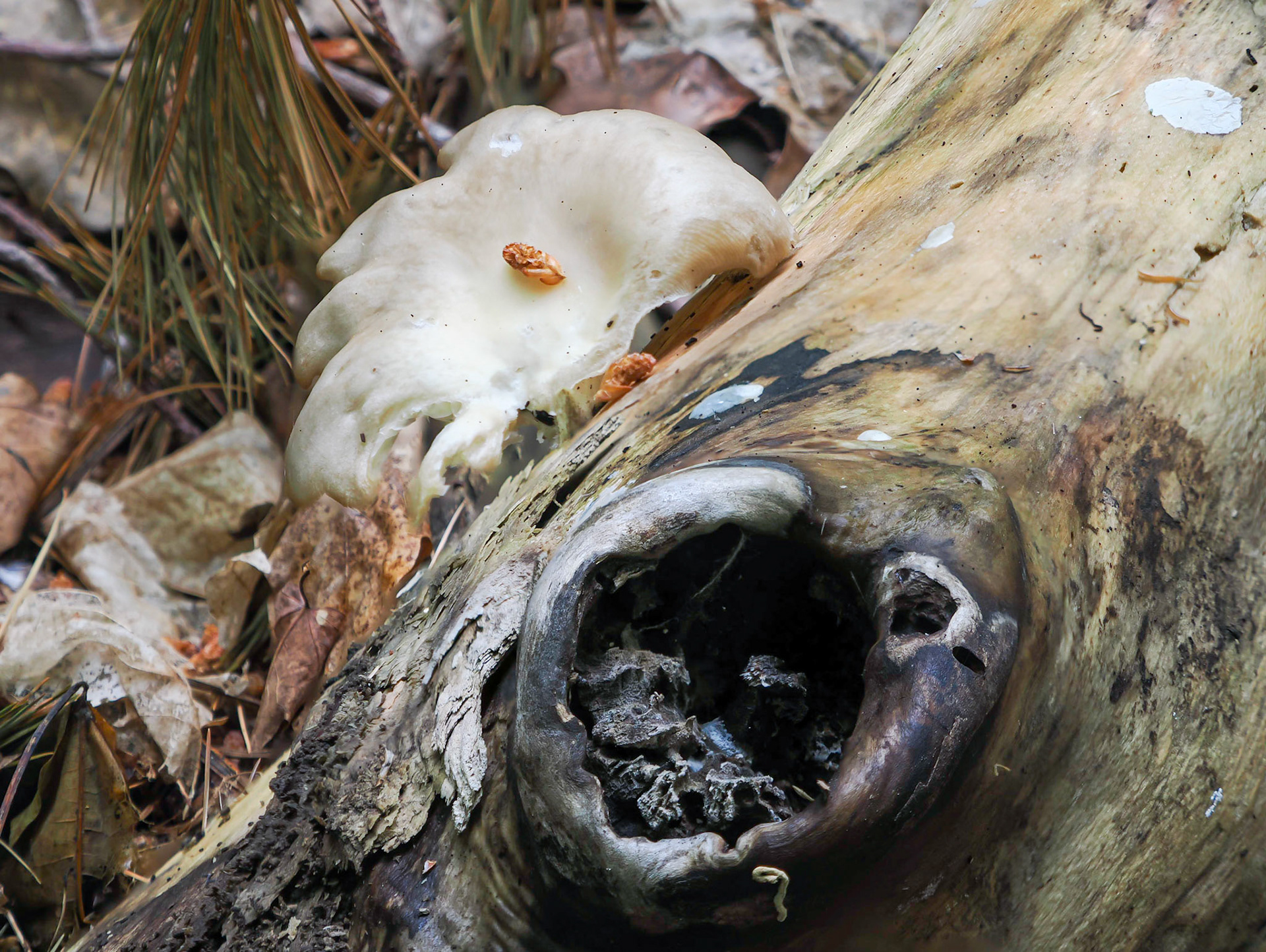



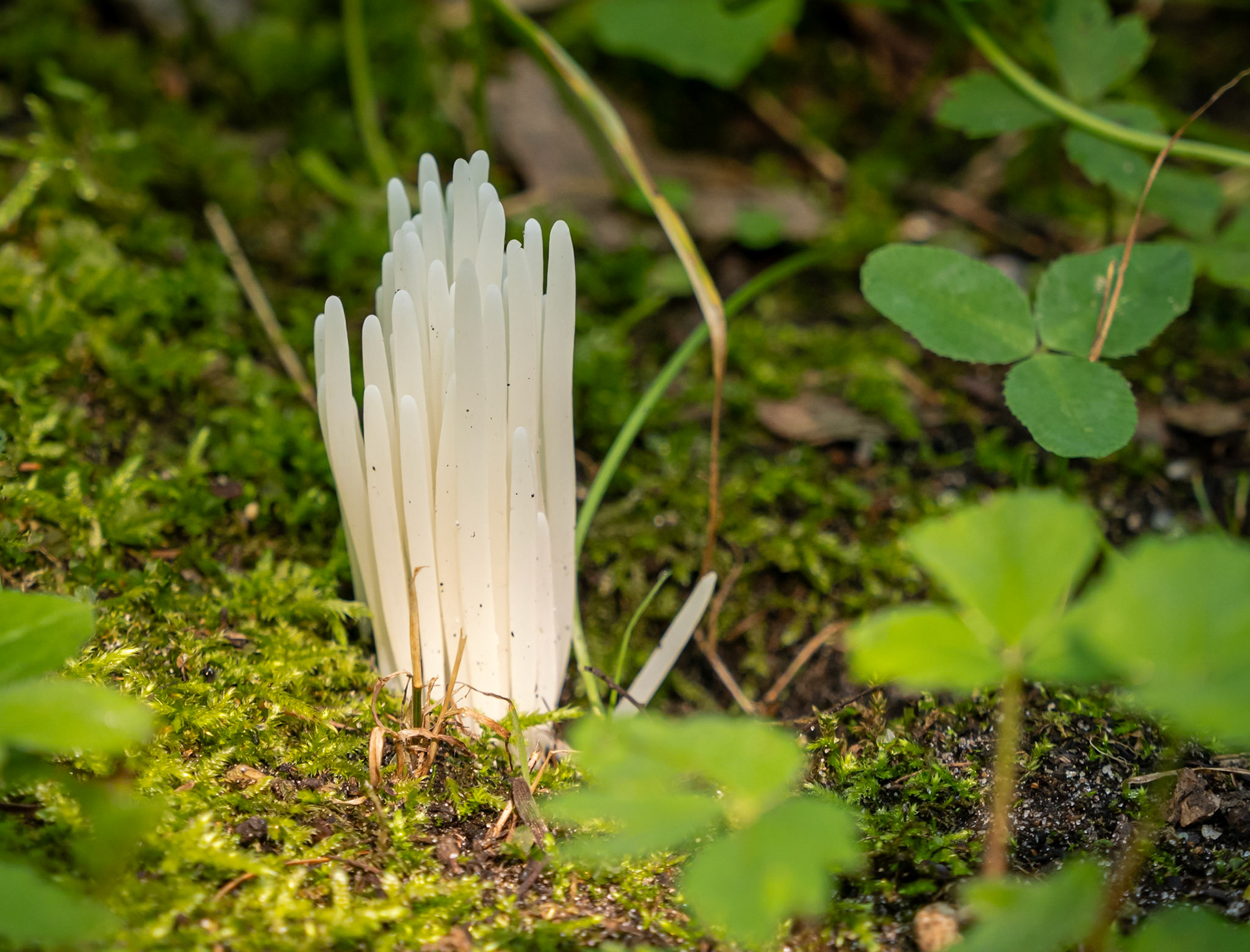
The dragonflies were certainly dealing with the mosquitoes which was great. Most of the dragonflies were dot-tailed whitefaced dragonflies.


But there were a few marsh bluet damselflies about.

With seeds, bugs etc more plentiful for the birds, not as many are following you on the trail looking for a handout, but a few will still bring a smile to your face as they sit on your hand.
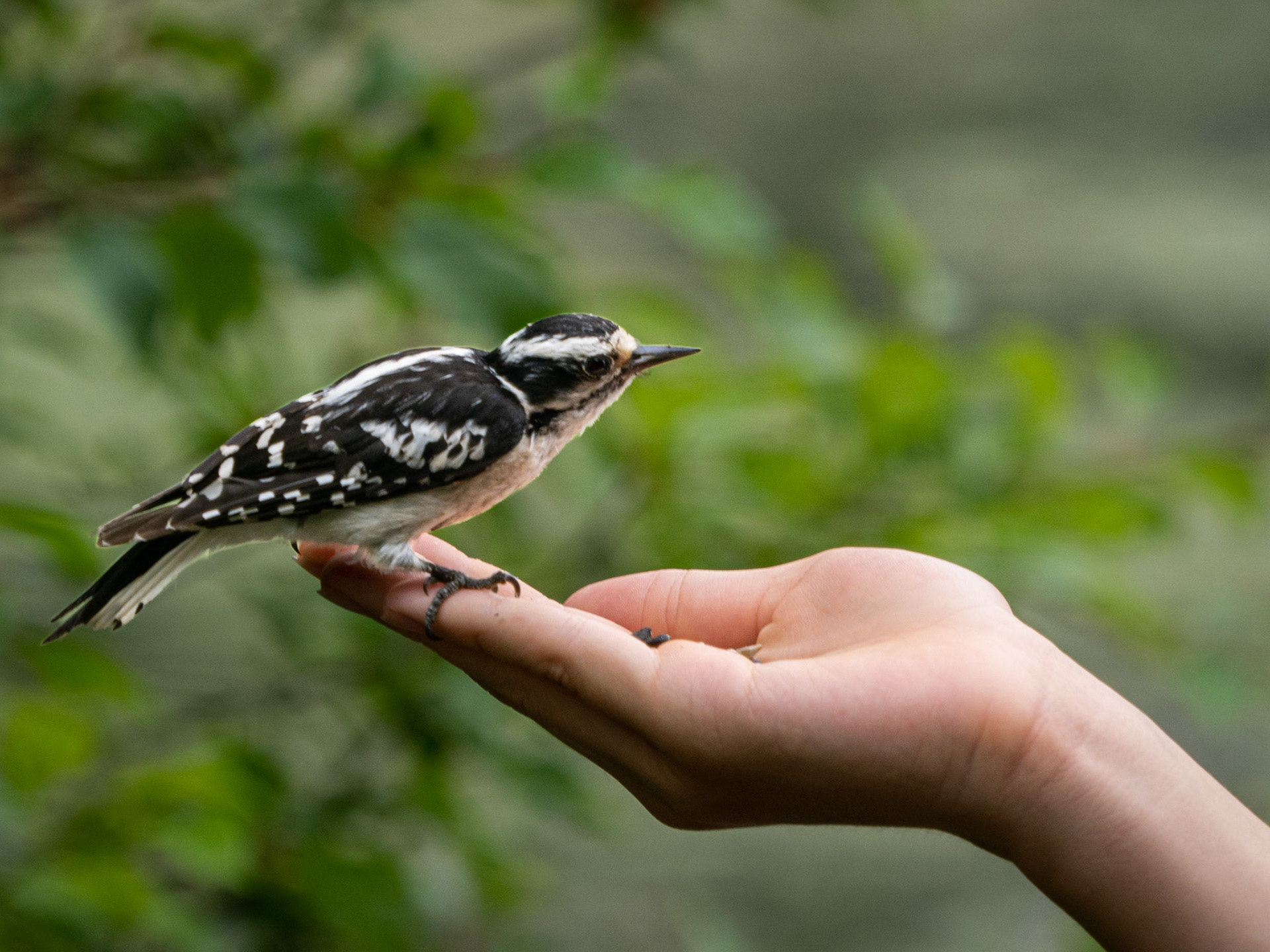

One scruffy looking chickadee only had the use of one leg, but it seemed to be managing fine.

We had thought there was only one wild turkey left by early June, then we found there were three. Well, turns out there were more. There is one loner male, a pair of adults, and 4 pullets. Tthe picture on the right is one of the pullets.)


The male of the family was practising tail raising.
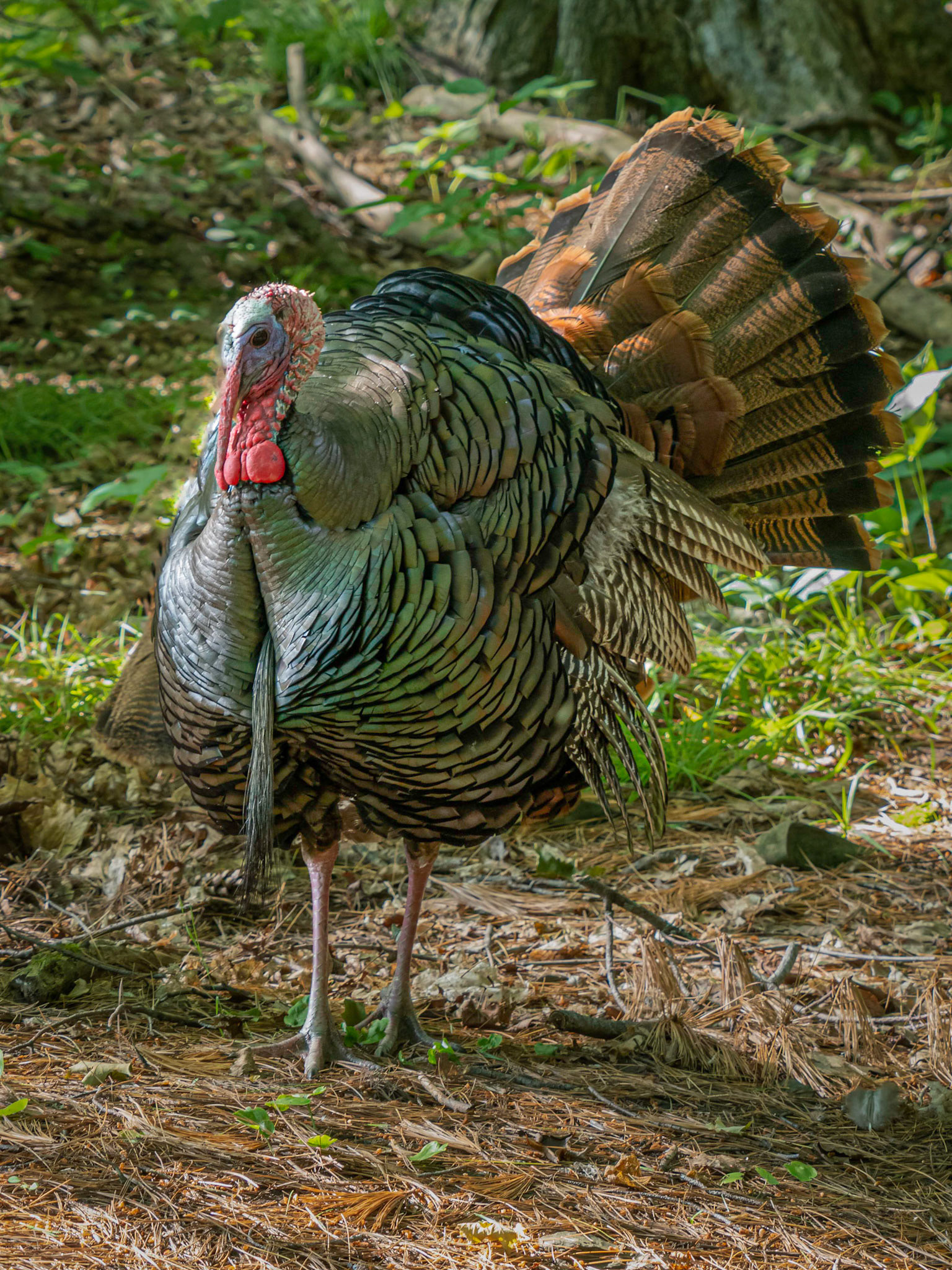
Between molting male* ducks, growing juveniles and the occasional family of very young juveniles, the ducks certainly get your attention.
*Female ducks molt too, but they tend to molt while on the nest, thus providing soft nesting material. Being hidden on nests means we don't see the females in molt.
The difference in the molted wood duck and non- molted certainly standout.
Both pictures show a fully molted male wood duck, with the left hand picture having a non-molted male following the molted one.
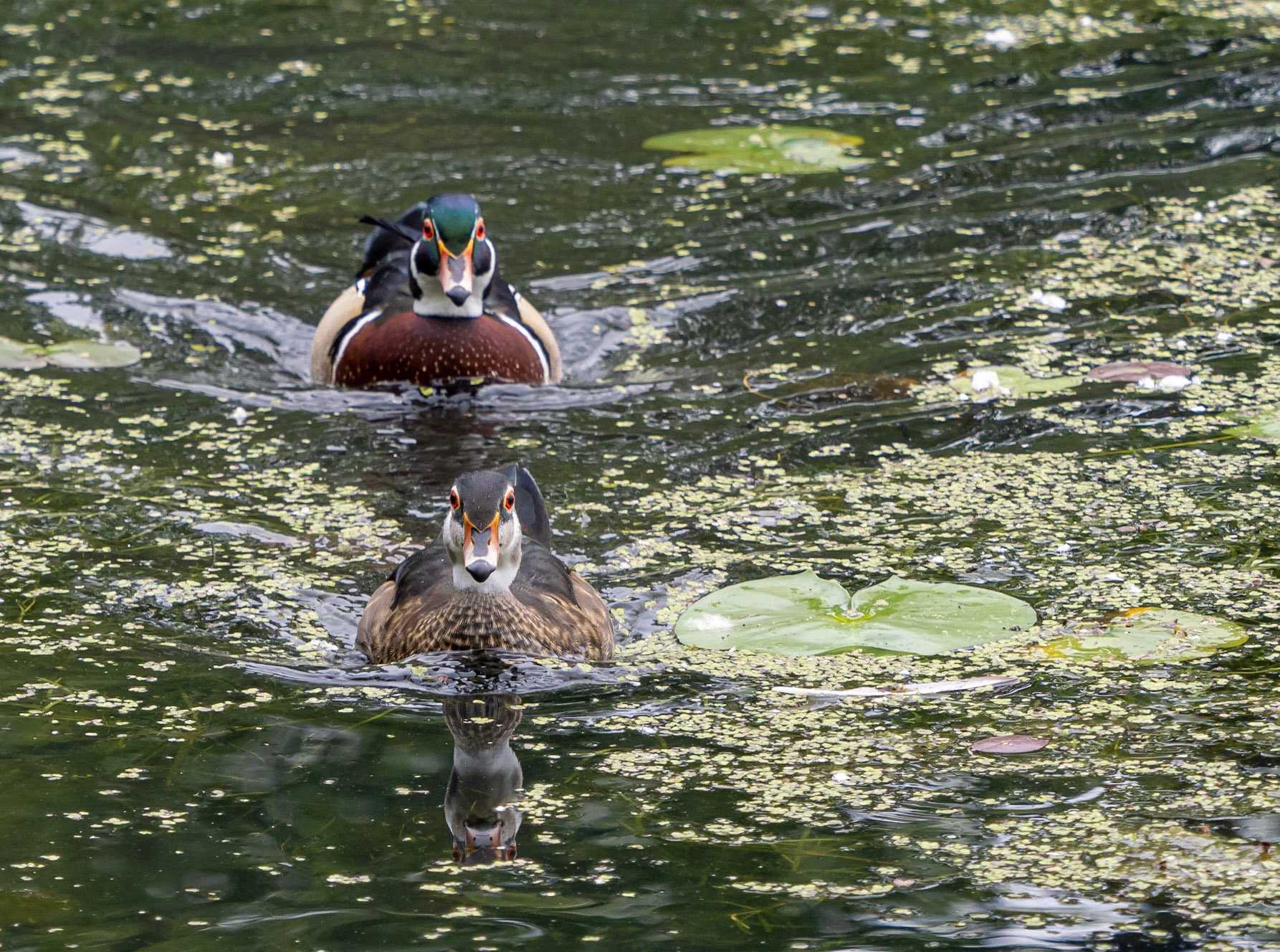

The male mallards lose their green head feathers and seem to acquire swirly dark brown chest feathers.
(mallard in full dree in winter for comparison)


Identification of the males when molting can be difficult....



Towards the end of the month some of the male mallards were starting to grow back their flight feathers. The feathers were still encased in sheaths, but would soon grow out of their casings.


While most of young mallards were looking like teenagers, there were still a few newly htached ducklings running about


Some of the goslings were certainly losing their downy feathers and showing their final colours, but others were a little behind..
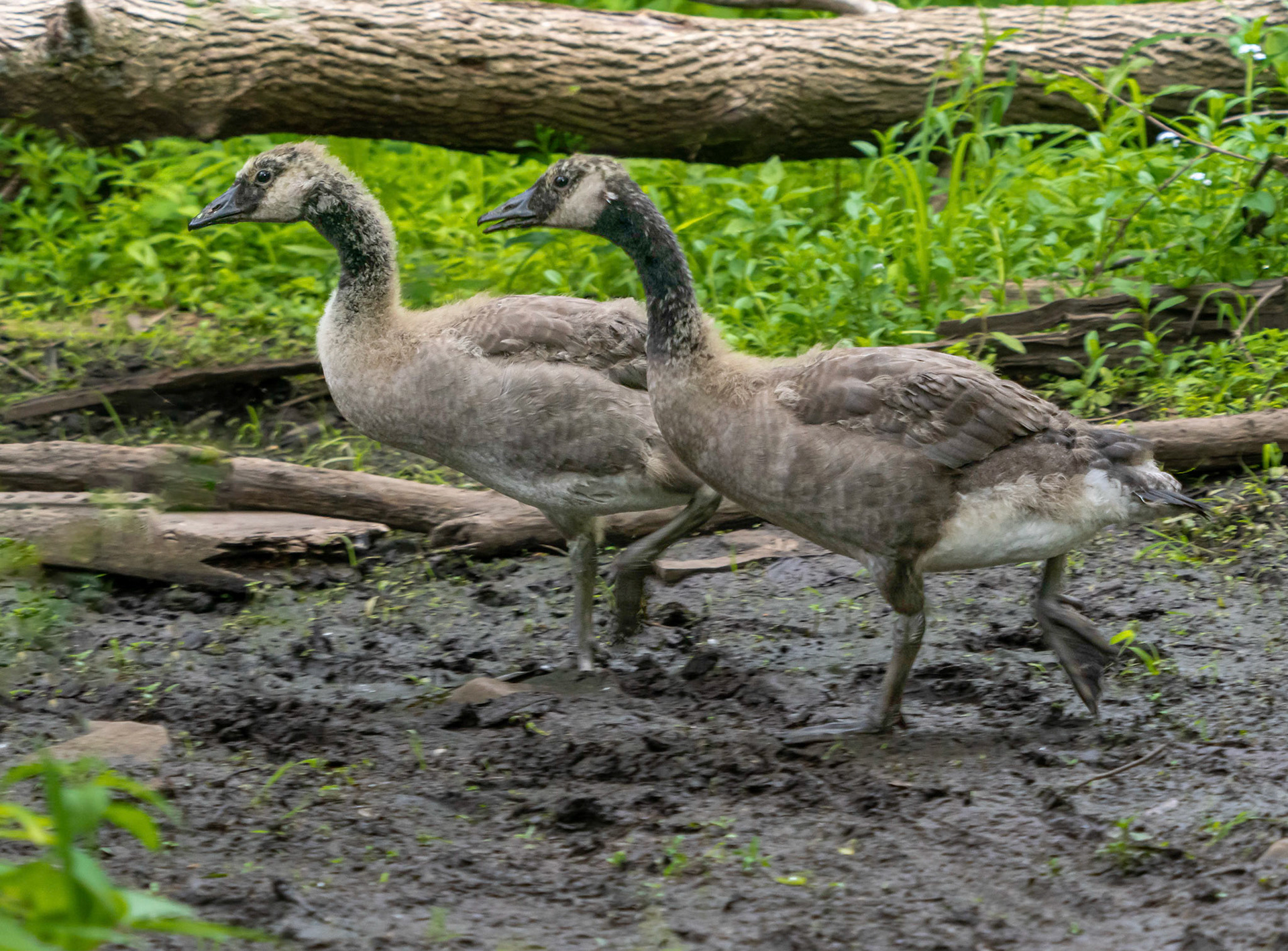

A female merganser was not hesitant at all at telling off some mallards when she wanted to come and rest up on a rocky shoal.

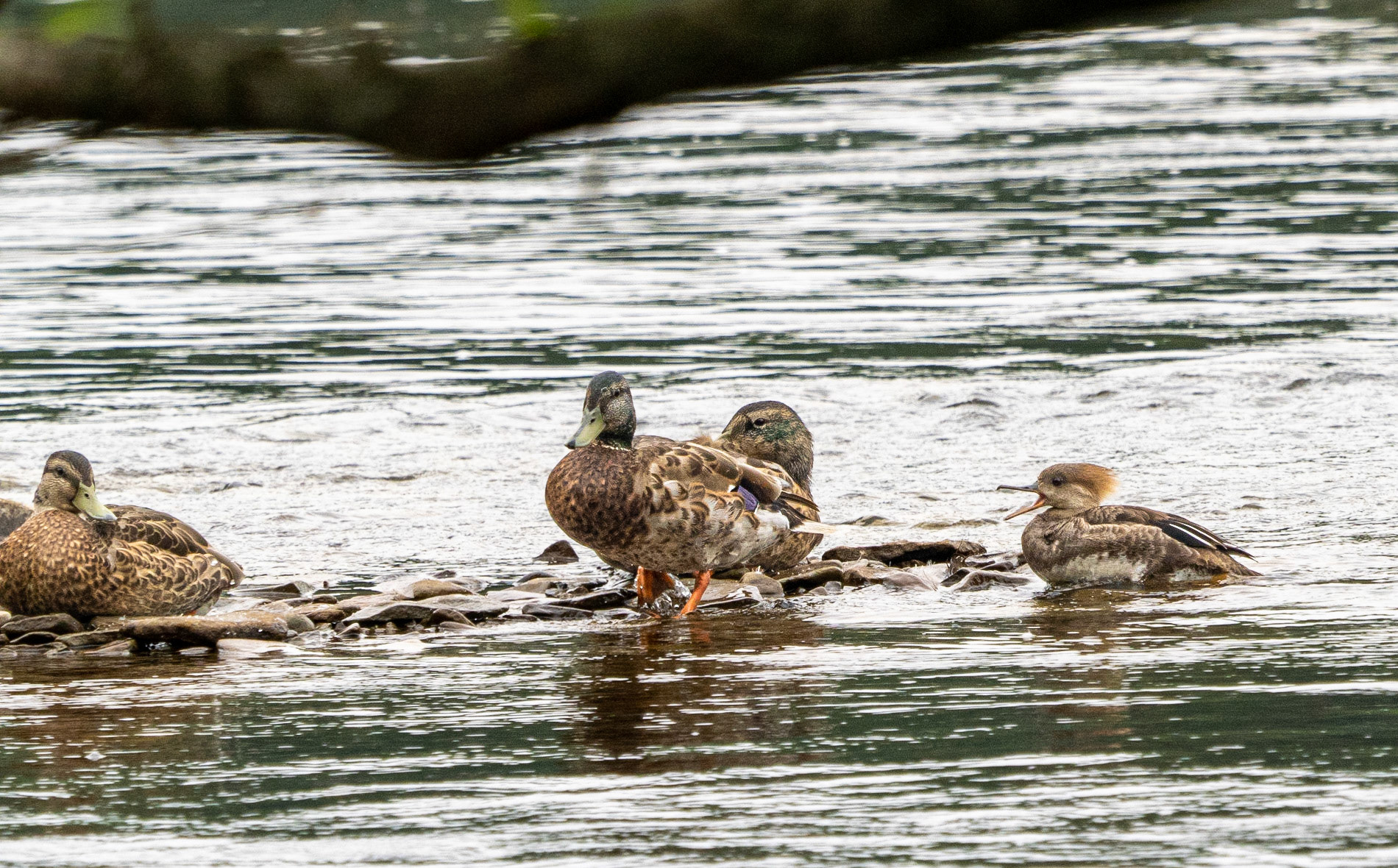



Is a woodpecker on a mullein flower called a mulleinpecker? A green heron let us watch himfor a few minutes before flaying over to visit a great blue heron on the far side of the lake.


Wild flowers were in bloom.
(scroll over for the names)

White and yellow waterlilies
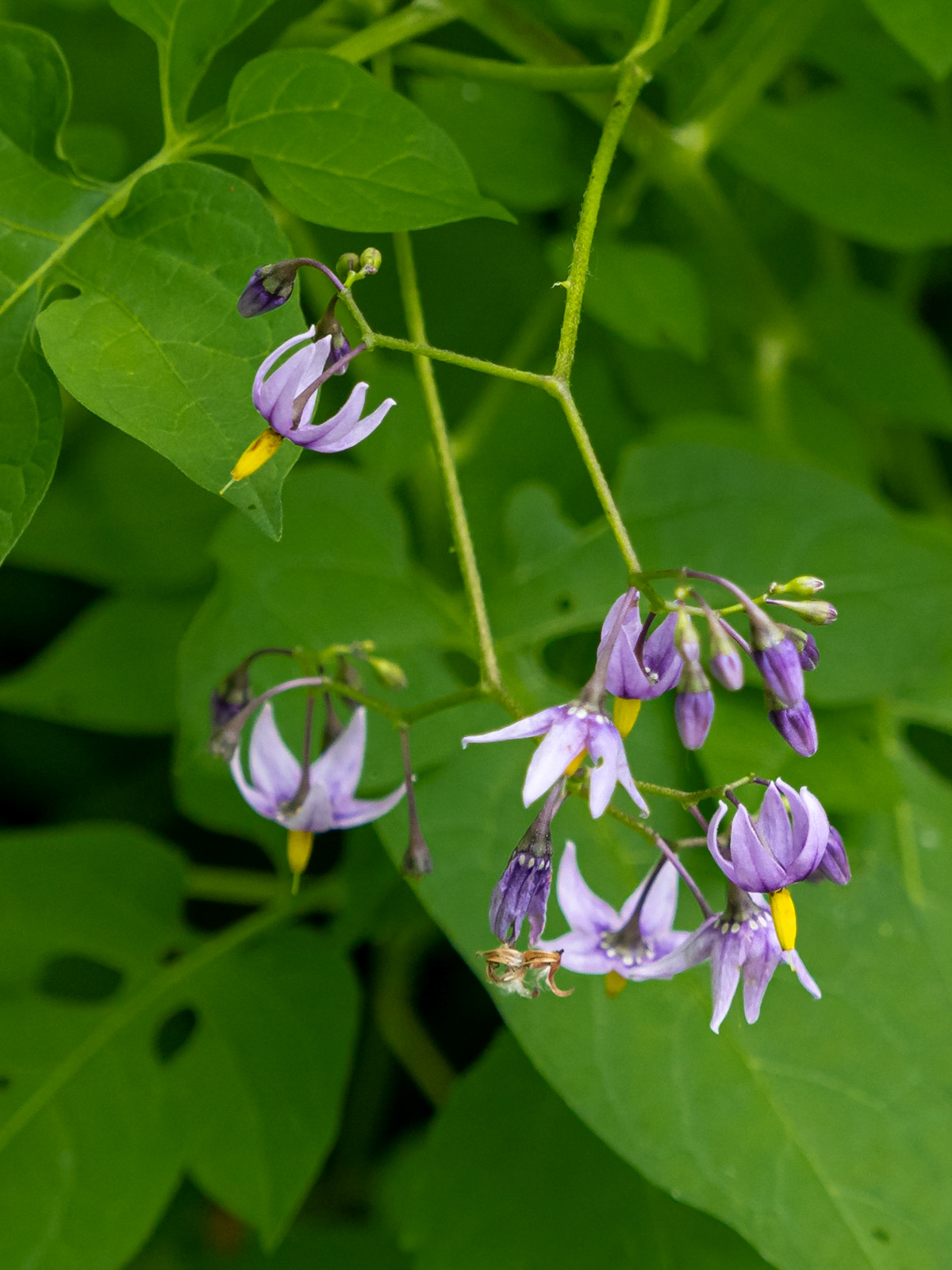
Bittersweet nightshade

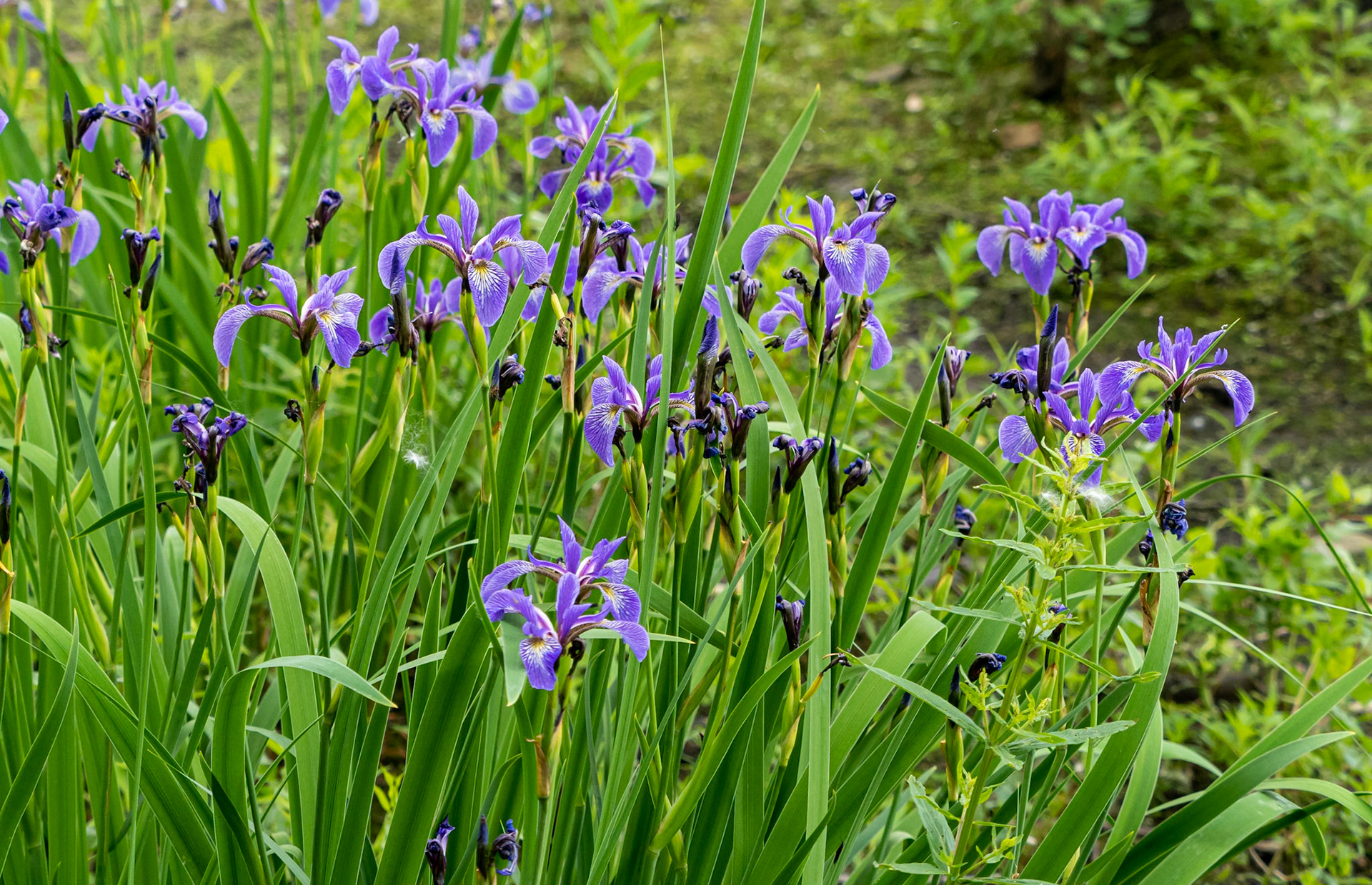
blue flag

pickerel weed

swamp milkweed

Deptford Ponk

B urdock

Purple Flowering Rasberry

Flowering Rush

Viper's Bugloss

Long-leaved Speedwell
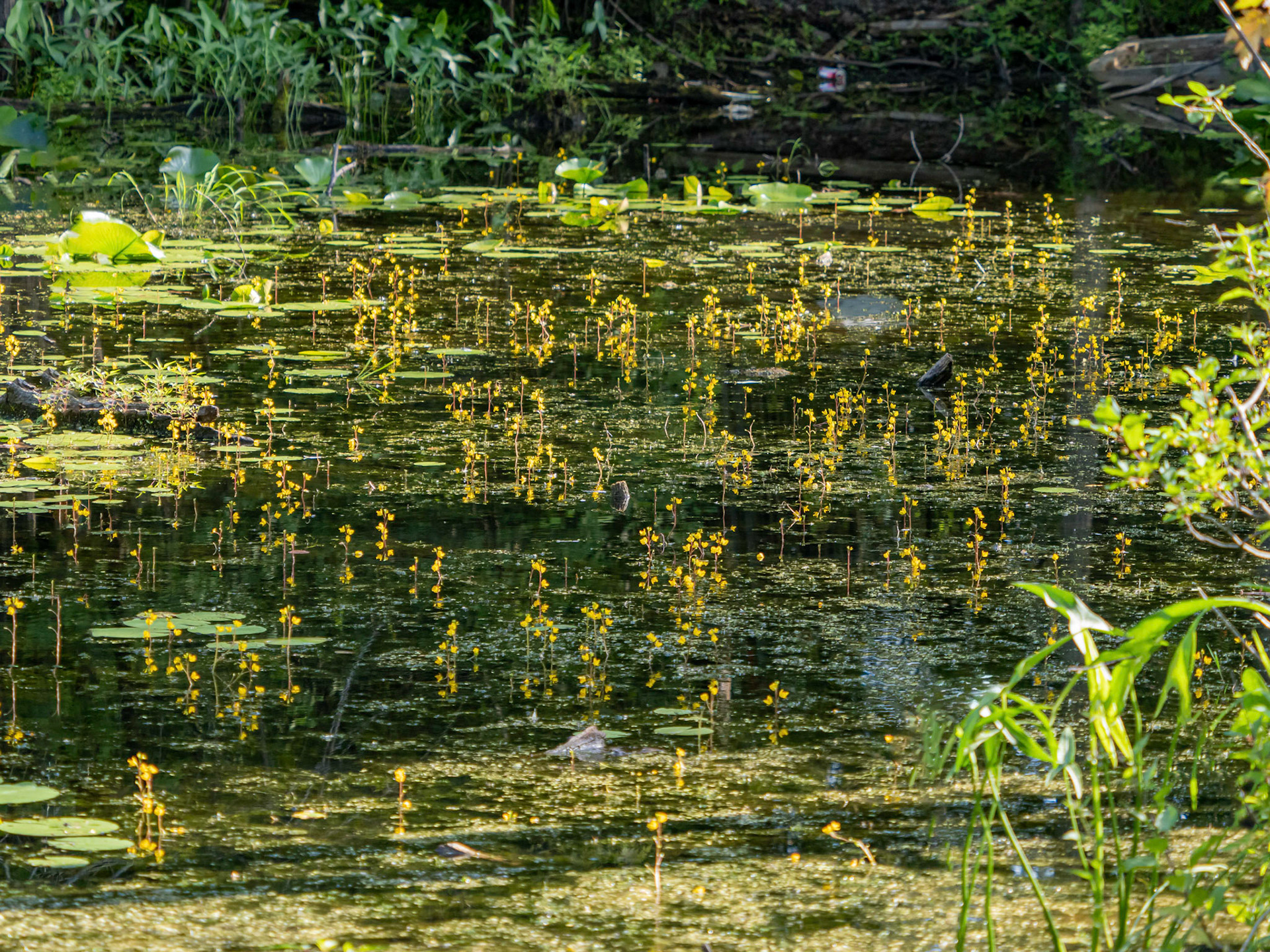
bladderwort
Some bittersweet nightshade berries had developed, the walnuts were getting good sized.


A few bees were visiting flowers and a hermit flower beetle (a new one to me) almost became a snack for a turkey .

Bald-faced hornet


Rampion Scissor Bee?
Two unusual creatures.... A flower hermit beetle and a Chinese mystery snail.


A few frogs were about. Green frog on the left and a golden green coloured bull frog (not quite as gold as one we saw last summer)


I am not sure if frogs eat slugs, but this bull frog certainly seemed to be thinking about it.
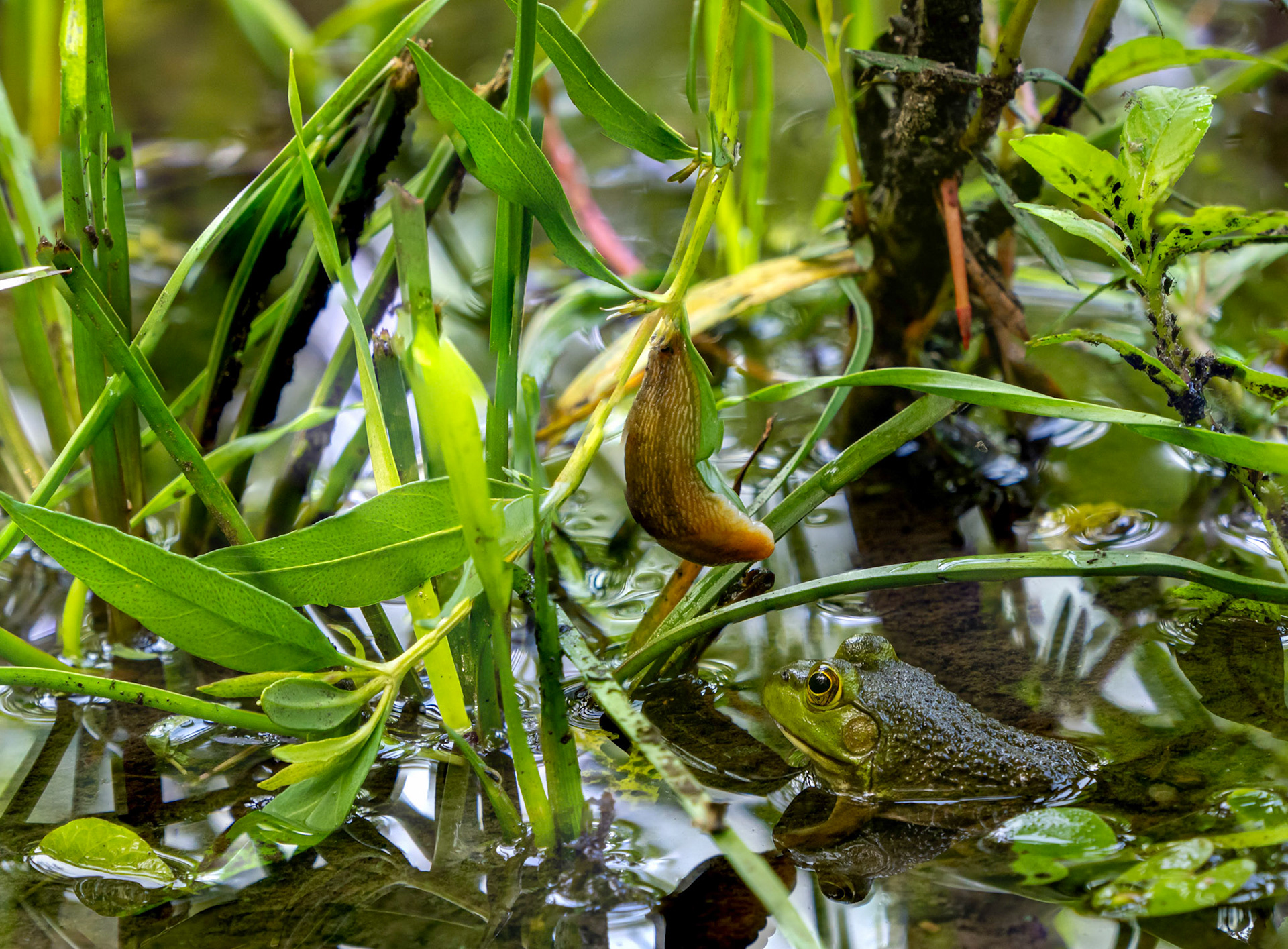
Rabbits were in several areas and a red squirrel had found a seed deposit in side a fence post.

